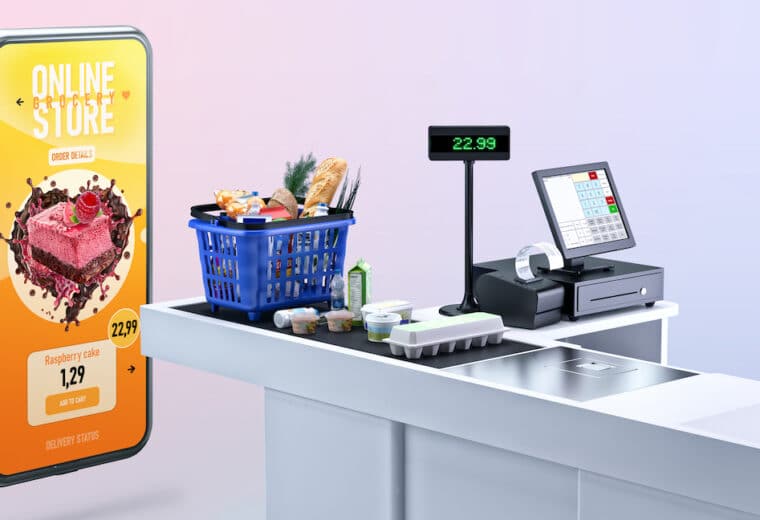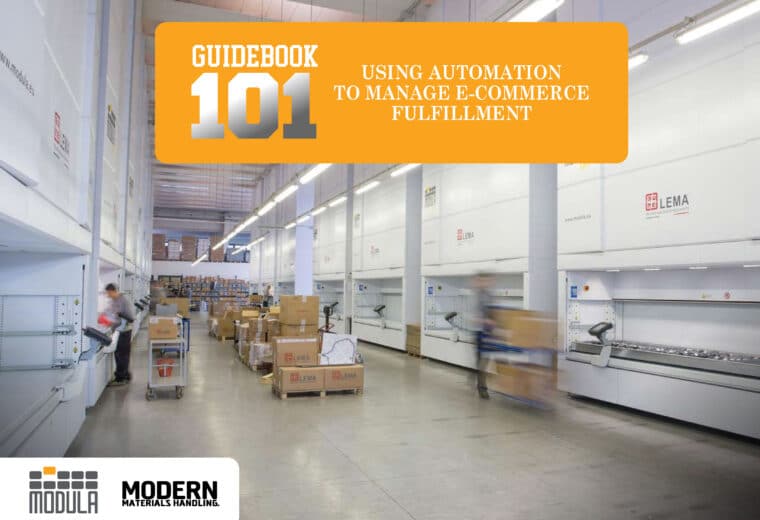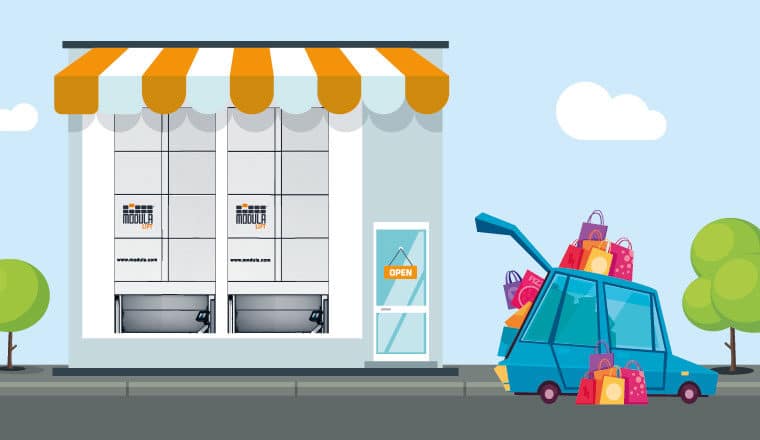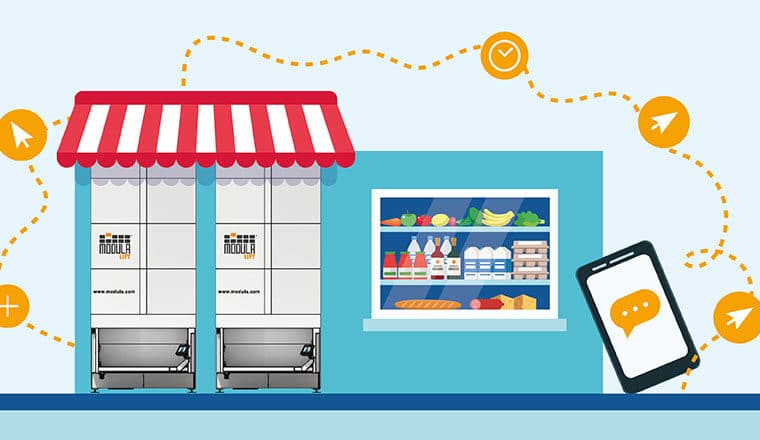A 101 Guide to Cost-Effective Cold Chain Logistics
The global cold chain logistics market is expected to reach $862 billion by 2032, and that growth brings both opportunity and pressure.
For warehouse managers, it means rising demand for temperature-sensitive storage, stricter compliance requirements and greater expectations for efficiency.
By the end of this guide, you will:
- Understand the fundamentals of cold chain logistics
- Recognize the key benefits and common challenges of managing a cold supply chain
- Learn practical strategies on how to enhance efficiency and cut costs
- Know how to reduce losses and protect product quality using Modula’s advanced warehouse systems
Understanding Cold Chain Logistics
Cold chain logistics is the process of storing and transporting temperature-sensitive products, like food, medicine and chemicals, under strictly controlled conditions.
It uses temperature-controlled systems, monitoring tools, and careful handling to keep items within safe temperature ranges.
For warehouse managers, it’s essential for preventing spoilage, protecting product quality and staying compliant in a high stakes supply chain.
Benefits of Cold Chain Logistics
Let’s take a look at why cold supply chain logistics is such a game-changer for operations handling temperature-sensitive products.
Preserving Product Quality
Perishable products like fresh food, medicine and chemicals can spoil quickly without proper temperature control.
A reliable cold chain keeps goods within safe temperature ranges throughout storage, transport and retail, helping reduce waste, extend shelf life and protect your bottom line.
Ensuring Regulatory Compliance
From food safety laws to pharmaceutical handling guidelines, cold chain logistics plays a key role in meeting regulatory requirements.
With better visibility, improved response times, and thorough reporting, you can stay aligned with industry standards like HACCP.
Protecting Consumer Health
Poor temperature control doesn’t just lead to product loss; it can also put consumers at serious risk.
Cold supply chain management systems help ensure that every item reaching the end user is safe, effective and handled properly.
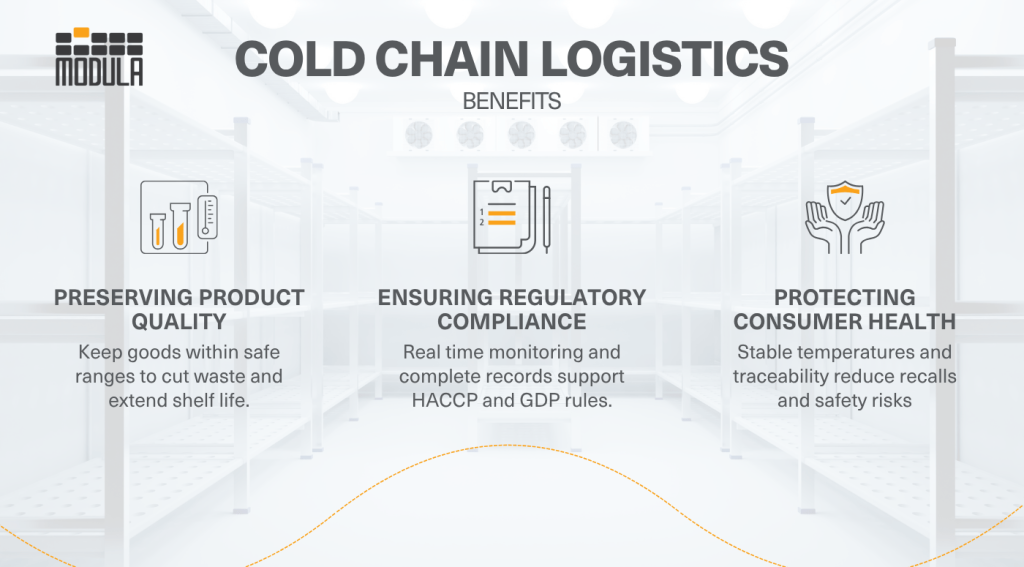
Leading Cold Chain Logistics Challenges
Cold chain logistics is a complex, high-cost process essential for transporting temperature-sensitive products like food and beverages, pharmaceuticals and electronics.
Its challenges go beyond traditional supply chains.
For example, vaccines require strict temperature control from production to delivery. Any deviation (even brief) can compromise their safety and efficacy.
So, what makes cold chain logistics so challenging?
High Costs of Temperature Control
Cold chain logistics is essential in sectors with a direct impact on public health, such as agri-food and pharmaceuticals, where strict temperature control is legally required at every stage of the supply chain.
In the United States, the Food Safety Modernization Act (FSMA), mandates the following:
- Requires transporters of food to ensure that temperatures are maintained for foods that require temperature control for safety (for instance, refrigerated or frozen foods)
- Encourages the use of temperature monitoring devices, data loggers and automated alerts during shipment
- Enforces recordkeeping practices to verify that proper conditions were maintained throughout the journey
Meeting these standards requires major investments in specialized infrastructure, such as cold rooms, insulation, sensors and reefer transport.
This costs up to five times more than dry goods logistics, plus significant ongoing energy expenses.
Risk of Contamination and Deterioration
Temperature-sensitive products, especially in the food sector, carry significant financial risk if mishandled.
The growth of large-scale retail and eCommerce makes cold chain logistics indispensable for keeping products fresh and safe from microbial contamination. To ensure safety and compliance, logistics must follow Hazard Analysis and Critical Control Points (HACCP) protocols.
The costs associated with product deterioration, both direct and indirect, can arise at any point along the supply chain.
These losses are often more pronounced during storage, when maintaining lower temperatures increases operational complexity and expense.
When products are contaminated or perish, the consequences are:
- Waste management costs
- Higher quality control costs
- Replenishment costs
Indirect costs, instead, are related to:
- Loss of reputation and trust
- Loss of market share
- Possible disputes due to claims for damages
To minimize the risk of contamination and product degradation, and the related costs, it’s essential to reinforce rigorous temperature control measures and leverage reliable technology to maintain the cold chain.
Inefficient Picking Times
Closely tied to the safety concerns noted above, picking times in cold logistics must be kept as short as possible to preserve product integrity.
While picking, items are removed from their temperature-controlled environment, and even brief exposure can compromise quality.
To prevent product degradation during order fulfillment, warehouse teams must design systems that minimize picking time.
Key approaches include:
- Implementing efficient picking strategies like batch or zone picking optimized for cold storage
- Deploying automation tools, such as robotic pickers, warehouse conveyors and temperature-controlled picking stations
Product Loss From Cold Chain Breaks
Missing temperature logs or incomplete handoff records can undermine confidence in product safety, especially for sensitive items like vaccines. In such cases, manufacturers often initiate voluntary recalls.
While the FDA rarely mandates them, it oversees the process to ensure timely notification and proper protocol compliance.
Data Integrity and Human Error
Paper logs are prone to mistakes, damage, and even intentional tampering. Regulations like 21 CFR Part 11 require electronic records to be:
- Secure
- Time-stamped
- Tamper-resistant
Without a properly validated digital system, it’s nearly impossible to ensure data integrity, leaving organizations exposed to compliance risks.
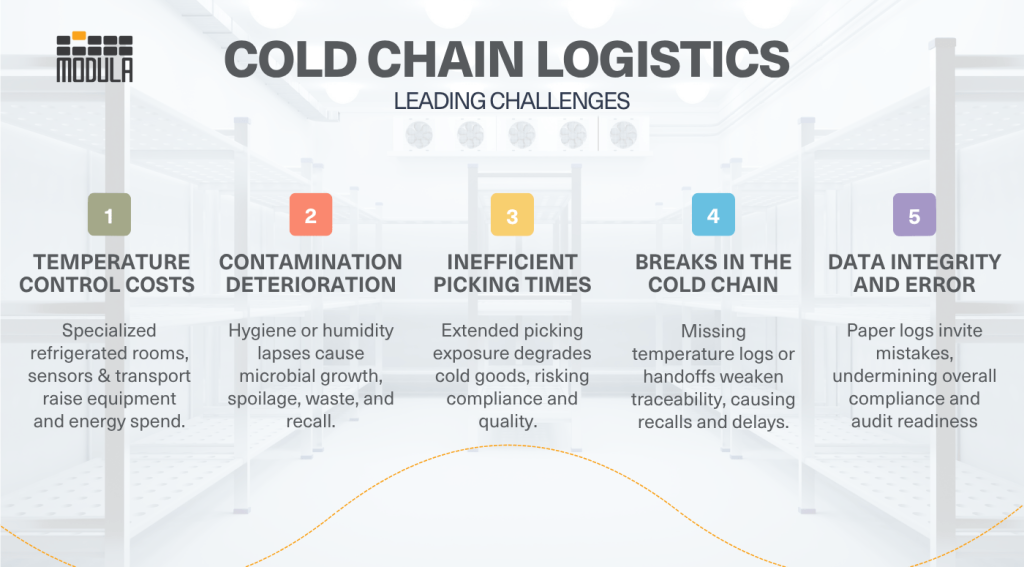
How To Cut Costs in Cold Supply Chain Logistics
While cold chain logistics has high operating costs, implementing the right processes and technologies can minimize expenses and boost efficiency.
Recent benchmarking data found that labor accounts for 35% of cold storage expenses, while rent or lease costs contribute 31%.

Electric power adds another 10%, reflecting the energy demands of temperature-controlled environments.
Without careful planning and oversight, these cost drivers can quickly erode profitability.
Businesses that implement the right processes and advanced technologies can minimize expenses and risks while also boosting overall operational efficiency.
These cost‑saving strategies can be applied throughout the main stages of the supply chain:
- Production
- Storage
- Loading of goods
- Transportation
- Unloading at distribution centers or points of sale
Automated Picking
Picking plays a crucial role in maintaining product safety, but human involvement is often limited in harsh environments such as frozen storage areas, where temperatures can drop to –30°C.
To minimize the risk of thermal shock and product degradation, modern cold chain logistics centers increasingly rely on automated systems, particularly anthropomorphic robots.
These robots enable goods-to-person workflows, streamlining operations in environments that are hazardous or inefficient for manual labor.
In addition, the integration of voice picking technology, which allows operators to interact with systems via headsets, further enhances speed and accuracy.
Robotic automation combined with voice-guided systems boosts safety and efficiency while cutting costs through faster picking and real-time product monitoring.
Intuitive order picking solutions are designed for quick setup and seamless operation, ideal for high-paced cold chain environments.
Automated Vertical Temperature-Controlled Storage Systems
Cooling a full warehouse requires significant energy which comes with high costs. To help cut these costs, it’s important to make the most of the available space, particularly vertical space.
Vertical automated storage systems offer an efficient solution, cutting warehouse space usage by up to 90%.
Solutions like temperature-controlled systems not only optimize space but also maintain precise temperature control between +2°C and +25°C. These solutions ensure the ideal environment for safe product storage by regulating both temperature and humidity.
Additionally, automation minimizes temperature loss by streamlining the picking and placing of goods, further lowering energy consumption and operational costs.loyees receive verbal commands on which items to pick and where to find them, allowing them to keep their hands and eyes free for the task.
Automated Handling in Deep Freezer Cells
In low-temperature storage, automated handling systems decrease operator exposure while improving both safety and efficiency.
Examples include pallet stacker cranes and pallet shuttles, which can be operated remotely and autonomously, ensuring faster and more streamlined operations.
Automated mobile robots (AMRs), specialized robots, and other handling systems used in cold storage or deep freezer environments are specifically designed to function under challenging temperature and humidity conditions.
These environmental factors can impact equipment performance and, if not properly managed, pose safety risks.
By lowering limiting product exposure to potential contaminants, and minimizing health risks for workers, these automated systems contribute to both lower operating costs and safer, more reliable workflows.
Cold Supply Chain Monitoring With Sensors and IoT
Modern cold chain logistics depend on advanced sensors and IoT technologies to track temperature, location, and product dimensions in real time.
These systems ensure consistent temperature control, reduce energy waste and protect product integrity.
With growing demand in sectors like e-grocery and pharmaceuticals, businesses must adapt, restructuring warehouses to fully leverage these technologies and optimize cold chain performance.
This includes:
- Integrating smarter systems that support precise monitoring
- Improving overall logistics efficiency
- Minimizing operational costs, all while ensuring proper handling of sensitive goods
How Modula’s Automated Systems Solve Cold Chain Challenges
While the strategies above are key, the most effective solution is to integrate them. Modula warehouse automation provides specialized hardware and software designed to solve the biggest cold chain challenges.
To Cut Costs (Energy & Space): A Modula VLM
A Modula Lift (VLM) is a fully enclosed vertical system. By consolidating storage vertically, it allows you to cool a much smaller, controlled environment instead of an entire room or warehouse, leading to massive energy savings.
To Maintain Environmental Control: Modula Climate Control
The Modula Climate Control is a specialized VLM engineered to maintain a precise, controlled environment. It can manage temperatures between +2°C and +25°C and relative humidity, making it ideal for pharmaceutical and high-value food products.
To Ensure Data Integrity (21 CFR Part 11): Modula WMS
The Modula WMS (Warehouse Management System) provides the digital backbone for compliance. It creates secure, time-stamped electronic records for every transaction, provides a full chain of custody, and restricts access by user, creating an audit-ready trail.
For Real-Time Monitoring & Integration: Modula IoT
Modula IoT is the data platform that provides real-time visibility and control over your temperature-sensitive operations. It integrates with the WMS to offer two powerful tools:
- Modula Web Analytics: For companies that need an all-in-one monitoring solution, this web-based portal provides real-time visibility into warehouse performance, machine status, energy consumption, and predictive maintenance alerts.
- OPC-UA Telemetry: For facilities that already use a central monitoring system (like a SCADA), this feature acts as a secure, standardized “bridge.” It allows your Modula units to share critical data (like performance, status, and temperature/humidity set points) with your existing third-party systems.
Optimize Your Cold Chain With Modula US: Key Takeaways
- Definition: Cold chain logistics keeps temperature-sensitive products within validated limits across storage and transport, with documented handling at every step.
- Cost Drivers: The main cost drivers are labor, facility footprint, and energy. Reducing exposure time, increasing storage density, and preventing excursions are the keys to controlling these costs.
- Primary Risks: The biggest risks are temperature or humidity excursions, gaps in the chain of custody and records, and unauthorized access to sensitive inventory.
- Best Practices: A successful strategy relies on real-time monitoring with calibrated sensors, FEFO lot rotation, validated equipment with tested contingency plans, and strict hygiene protocols.
- How Automation Helps: Automated picking systems (like vertical temperature-controlled storage) cut the energy footprint and limit door openings, while automated handling in deep freeze protects both people and products.
- Data and Compliance: A compliant operation must use secure, time-stamped electronic records and access controls to align with cGMP, 21 CFR Part 11, DSCSA, and USP guidance.
Cold Chain Logistics: FAQs
What are cold chain products?
Cold chain products are goods that must be kept within a specific temperature range throughout storage, handling and transportation to maintain their safety, quality and effectiveness.
These typically include:
- Perishable foods, such as dairy, meat, seafood and fresh produce
- Pharmaceuticals and vaccines, which can lose potency if exposed to temperature fluctuations
- Biological materials like blood, tissue samples or lab reagents
- Certain chemicals and cosmetics that require controlled environments to prevent spoilage or degradation
In short, if a product can spoil, lose efficacy, or become unsafe when not kept cold, it’s part of the cold chain.
What is cold chain transportation?
Cold chain transportation is the process of moving temperature-sensitive products using refrigerated vehicles or containers that keep them within a safe temperature range.
What are the compliance requirements for cold chain logistics?
Cold chain operations are governed by a range of international standards and protocols designed to ensure product quality, safety and regulatory compliance.
Some of the most important include:
- ISO 9001: Quality Management Systems
- Hazard Analysis and Critical Control Points (HACCP)
- Good Distribution Practices (GDP)
- Specific regulations like the FSMA (for food) or 21 CFR Part 11 (for pharma data).
- Transportation Standards like the International Air Transport Association (IATA) and ATP (Agreement on the International Carriage of Perishable Foodstuffs)
- Cold Chain Traceability Systems
What temperature-controlled storage solutions does Modula offer?
Modula offers specialized solutions for controlled environments. The Modula Climate Control is a VLM that maintains a specific temperature and humidity range.
For sterile applications, the Modula Clean Room is designed for ISO 14644-1 Class 7 or 8 environments.





